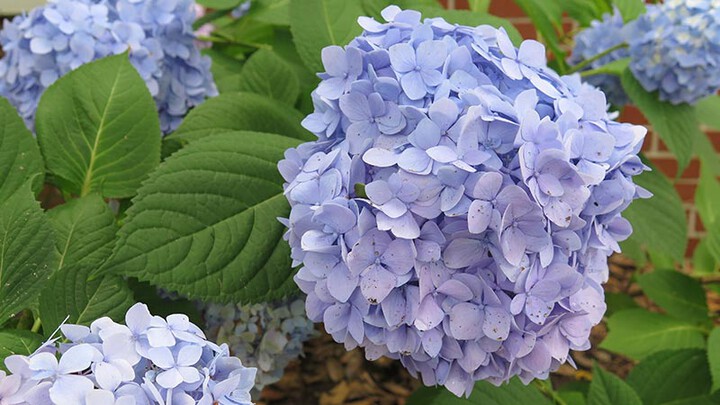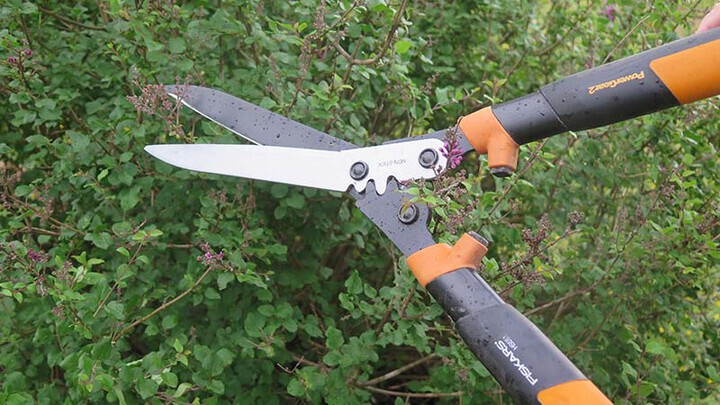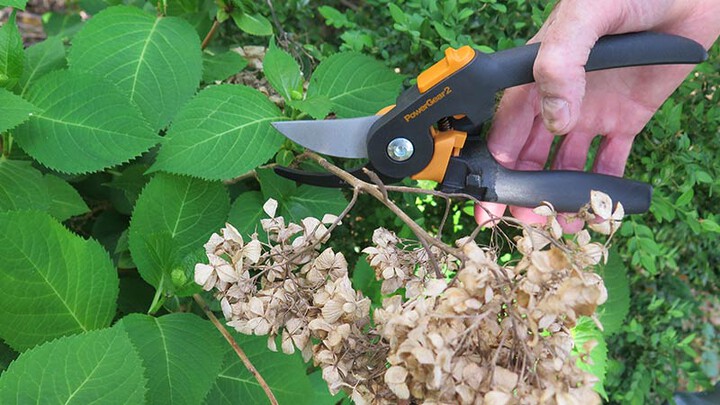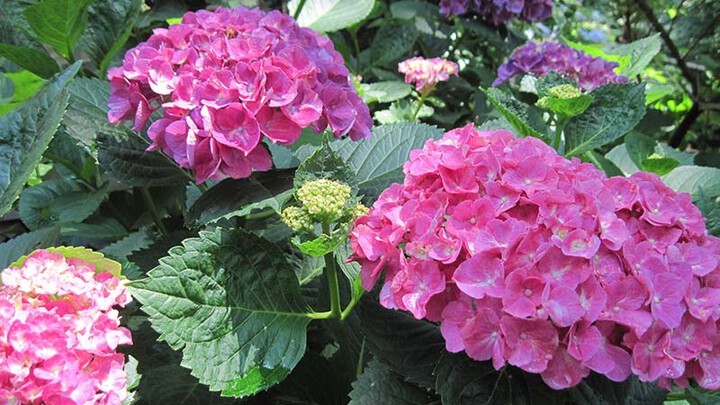When designing your outdoor space, consider adding shrubs. They make great additions around the foundations of a house or as privacy walls. Shrubs provide shade which can be helpful for lower-growing plants and can be used as backdrops to define garden beds.
Shrubs are small to medium-sized woody plants, larger than flower, but smaller than trees. They usually have several stems, not just one main stem or trunk, like a tree. A shrub can be less than a foot tall or up to 15 feet tall and may be evergreen or deciduous (dropping their leaves in the winter).

Shrubs add color, foliage texture, and structure to a garden. The most popular shrubs are hydrangeas because of their long-lasting blooms. Lilacs, azaleas, roses, and butterfly bush are other popular flowering shrubs. Yews, boxwood, and arborvitae are evergreens and grown mainly for their lush greenery.
Planting shrubs
Choose a shrub that will thrive in your climate and conditions. A local garden shop is a great place to start. As you browse through the selection, read the labels to find out whether a shrub needs sun or shade, whether it tolerates drought or needs plenty of moisture, and what size it will be at maturity. Once you’ve chosen the right shrub, it’s time to plant.
Before digging a hole, set the shrub in its nursery pot in the desired new spot. Allow plenty of room for it to grow. Don’t plant too close to the house, the front walk, or a driveway.
Now water the new plant well. Watering before planting helps reduce the stress of transplanting and helps keep the soil ball intact. Gilmour’s Thumb Control Watering Nozzle is an ideal tool to use because you can adjust the spray to water gently.
Next, dig a hole. The hole should be the same depth as the plant’s pot and about twice as wide to give the shrub’s roots room to spread out. Take the plant out of its pot, loosen the soil around the sides, and center it in the hole at the same depth it was growing in the pot. Fill the hole around the shrub with soil. Firm the soil around the root ball with your hands making sure to establish good soil contact.

To reduce water run-off, make a ring of soil, compost or mulch around the edge of the hole. When watering, the water will then soak down to the roots. Mulch lightly around the plant to help keep the soil moist and to discourage weeds.
Use your watering nozzle to water thoroughly by hand. Another option is setting the nozzle on a “shrub” setting and laying it down by the shrub for a few minutes.
Pruning shrubs
Light pruning from time to time will help maintain a shrub’s size and shape. There are a few different tools you can use depending on the size of the shrub and the area you are pruning. Choose between hand shears, loppers, or hedge shears.

Spring is a good time to prune, before the shrub leafs out. Use loppers or hand pruners to remove dead stems, wayward or crossing branches. Cut dead stems back to a point where you can see fresh growth.
Wait to prune flowering shrubs, such as lilacs, until after they bloom. Lilacs produce spring flower buds on stems from the previous summer. If you prune lilacs in spring, before they bloom, you may be cutting off flower buds. Pruning after flowering also encourages re-blooming shrubs to bush out and produce another round of blooms.
Big blue or pink-flowering hydrangeas should be cleaned and shaped early in spring, cutting off the spent blooms from the previous year and removing any dead stems.

Watering shrubs
Watering is one of the most important things you can do to take care of shrubs, especially newly planted ones. During their first season in the garden, water thoroughly once a week if it doesn’t rain. Soak the soil around the shrub, using a nozzle to manage the flow. Lay the nozzle on the ground and turn on the water to a slow flow.
Easily adjust the flow with the thumb control watering nozzle. Then set a timer for five or 10 minutes to allow the water to sink in. Deep watering encourages the shrub’s roots to grow deep into the soil. Once there, they will have more access to moisture.
Another tool you can use to water newly planted shrubs is a soaker hose. Lay the hose around the shrub inside the watering ring and turn the water on so it is weeping gently from the hose. Leave the water on for about 10 minutes to water deeply. Then check the moisture in the soil with your finger. If it feels moist down to the root layer, turn the water off.
If you’re watering a number of shrubs in a border or a hedge, use a sprinkler, such as Gilmour’s Tripod Circular Sprinkler, to water the area where shrubs are growing.
Feeding shrubs
Newly planted shrubs should not be fertilized. Applying fertilizer to new shrubs can lead to weak, spindly growth. Mulching the soil with compost helps maintain moisture and adds sufficient nutrients and micronutrients to the soil.
Before fertilizing existing shrubs that are performing poorly, cultivate the soil around them lightly and add a layer of mulch or compost. Make sure they are getting the moisture they need and prune to remove damaged stems. If the shrubs do not respond to this care, then fertilize lightly, following the directions on the package.

Good gardening practices are the key to growing beautiful shrubs. Choose shrubs that thrive in your area, plant them properly and give them room to grow. Make sure to water thoroughly while they are becoming established and continue to water when necessary. Prune to shape, encourage blooms, and remove lanky, dead, or crossing stems.